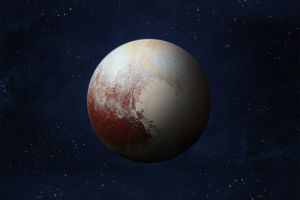Earth is one of the most habitable planets known to humanity, and this unique attribute allows us to thrive, enjoy abundant resources, and benefit from a favorable living environment.
The habitability of Earth is not only due to its physical and chemical conditions but also to its complex ecosystems and the delicate balance between humans and nature!
1. Moderate Sunlight
One of the key factors that makes Earth capable of supporting life is its ideal distance from the Sun. The Sun is Earth's primary energy source, and the distance between Earth and the Sun lies within the habitable zone, as scientists call it.
If Earth were too far from the Sun, its temperatures would be too low, and water would freeze, making life impossible. If it were too close, Earth would be too hot. The distance of approximately 149.6 million kilometers (93 million miles) places Earth in the perfect spot to maintain a temperature range that supports liquid water, a crucial factor for life.
2. Suitable Climate
Earth’s atmosphere not only provides the oxygen we need but also regulates temperatures and prevents extreme temperature fluctuations. The greenhouse gases in the atmosphere, such as carbon dioxide and water vapor, absorb heat reflected from the Earth's surface, preventing the planet from overheating or freezing.
During the day, intense solar radiation is moderated by the atmosphere, and at night, the atmosphere's insulating properties help maintain relatively warm temperatures.
3. Atmospheric Protection
Earth's atmosphere does more than supply oxygen; it also shields us from harmful space radiation and solar winds. Earth's magnetic field enhances this protective effect by deflecting harmful solar winds and cosmic rays toward the poles, preventing them from directly impacting the surface. This mechanism ensures that life on Earth is not threatened by intense radiation, making Earth a relatively safe environment for living.
4. Abundant Water Resources
Earth is the only known planet in the solar system that has abundant liquid water. Water is a fundamental building block of life, and Earth's plentiful water resources allow life to thrive in various ecosystems. Earth's water includes oceans, lakes, rivers, and groundwater, which not only provide drinking water for humans but also support agriculture, industry, and energy production.
5. Diverse Ecosystems
Earth boasts a wide variety of ecosystems, including tropical rainforests, grasslands, deserts, and polar regions. Each ecosystem supports unique populations of organisms and environmental conditions, collectively maintaining the planet's ecological balance.
For instance, tropical rainforests provide ample oxygen and food sources, while ocean ecosystems play a key role in the carbon cycle and climate regulation. Through the interaction of these ecosystems, complex food chains and ecological networks are formed, offering diverse food and resources to humans.
6. Fertile Soil
The fertility of Earth's soil is another essential factor for the proliferation of life. Rich in minerals and organic matter, the soil provides essential nutrients for plants, which in turn form the basis of Earth's various vegetation types.
These plants not only supply food for animals but also release oxygen into the air, helping to regulate carbon dioxide levels and maintain the Earth's climate balance. Fertile soil enables humans to engage in agriculture, ensuring a steady food supply for the global population.
Earth is one of the most habitable planets known to humanity because it possesses several ideal natural conditions. Therefore, protecting Earth’s ecological environment and ensuring its sustainable development is our collective responsibility!
What Makes Earth Suitable For Life
Video by Five Things


